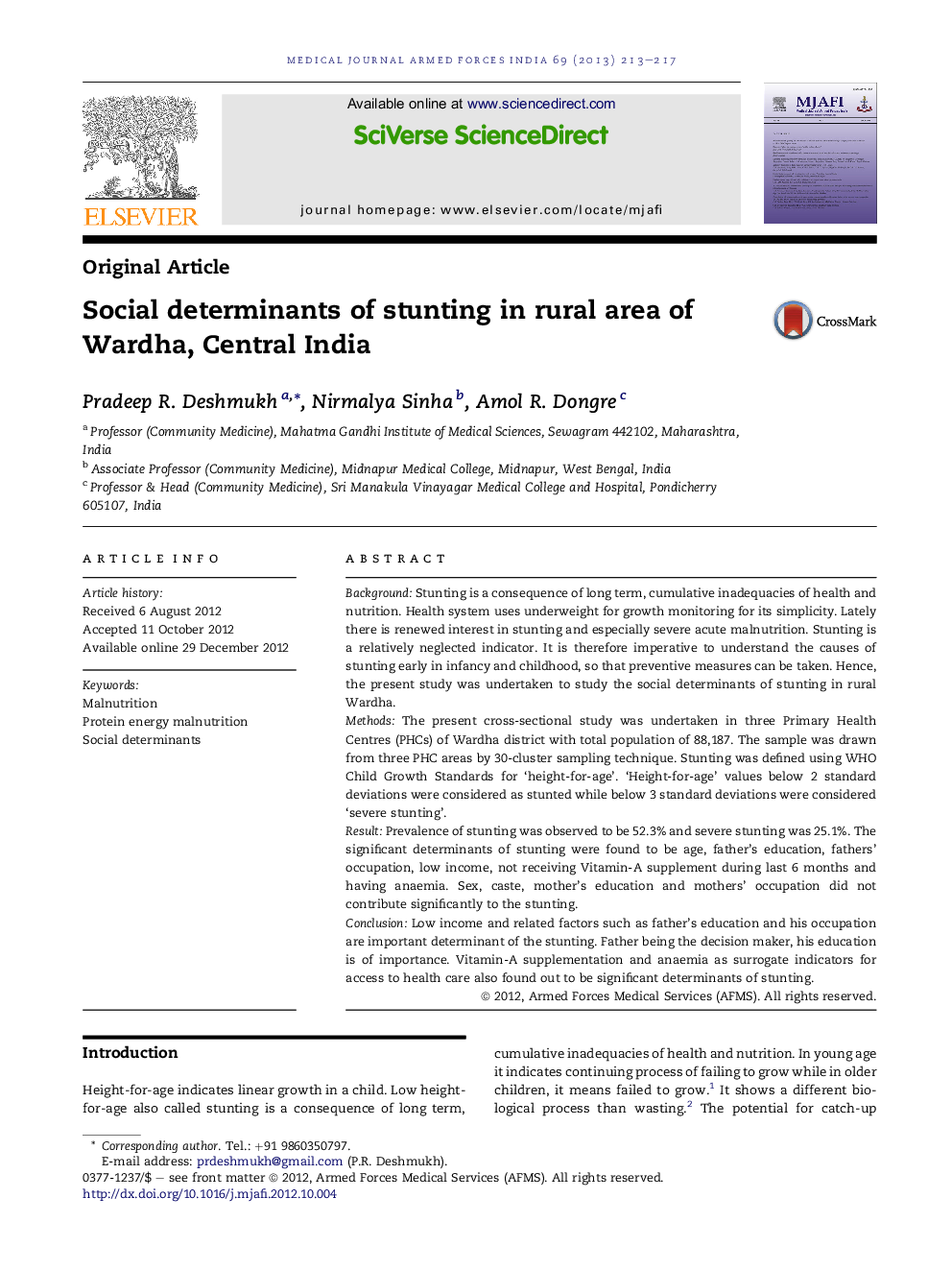| Article ID | Journal | Published Year | Pages | File Type |
|---|---|---|---|---|
| 3161773 | Medical Journal Armed Forces India | 2013 | 5 Pages |
BackgroundStunting is a consequence of long term, cumulative inadequacies of health and nutrition. Health system uses underweight for growth monitoring for its simplicity. Lately there is renewed interest in stunting and especially severe acute malnutrition. Stunting is a relatively neglected indicator. It is therefore imperative to understand the causes of stunting early in infancy and childhood, so that preventive measures can be taken. Hence, the present study was undertaken to study the social determinants of stunting in rural Wardha.MethodsThe present cross-sectional study was undertaken in three Primary Health Centres (PHCs) of Wardha district with total population of 88,187. The sample was drawn from three PHC areas by 30-cluster sampling technique. Stunting was defined using WHO Child Growth Standards for ‘height-for-age’. ‘Height-for-age’ values below 2 standard deviations were considered as stunted while below 3 standard deviations were considered ‘severe stunting’.ResultPrevalence of stunting was observed to be 52.3% and severe stunting was 25.1%. The significant determinants of stunting were found to be age, father's education, fathers' occupation, low income, not receiving Vitamin-A supplement during last 6 months and having anaemia. Sex, caste, mother's education and mothers' occupation did not contribute significantly to the stunting.ConclusionLow income and related factors such as father's education and his occupation are important determinant of the stunting. Father being the decision maker, his education is of importance. Vitamin-A supplementation and anaemia as surrogate indicators for access to health care also found out to be significant determinants of stunting.
